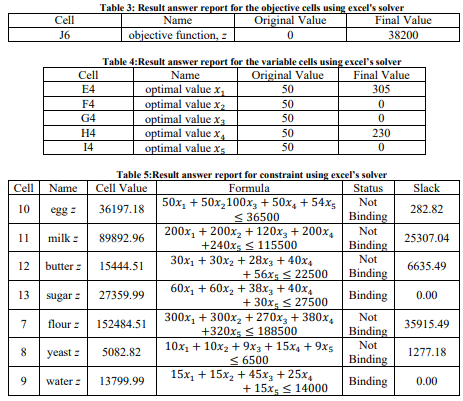International Journal of Advanced Research in Technology and Innovation, e-ISSN: 2682-8324 | Vol. 4, No. 2, 92-98, 2022
Linear programming is an operational research technique widely used to identify action solutions for managers. The linear programming model explores the efficient use of available raw materials to produce different marketable products. Linear programming will encourage companies to increase production by taking full advantage of this opportunity. However, the trial-and-error approach is most often used by many organizations. As a result, firms find it challenging to allocate scarce resources in a profit-maximizing manner. This study focuses on implementing optimization principles to optimize manufacturing revenues through linear programming to measure production costs and determine their optimal benefits. The study uses data from bakery reports for five market bread: chicken loaf, spicy loaf, curry chicken bun, sausage bun, and a doughnut. The attribute has been identified as a linear programming problem, built mathematically and solved using Excel software. The results show that bakery units should concentrate more on producing chicken puffs and curry chicken buns. In comparison, other products should be produced less because their value becomes zero to reach the maximum monthly profit of RM 38,200. The analysis found that chicken puff and chicken curry buns objectively contribute to the revenue. Therefore, more chicken floss and chicken curry buns must be produced and sold to maximize profit.
